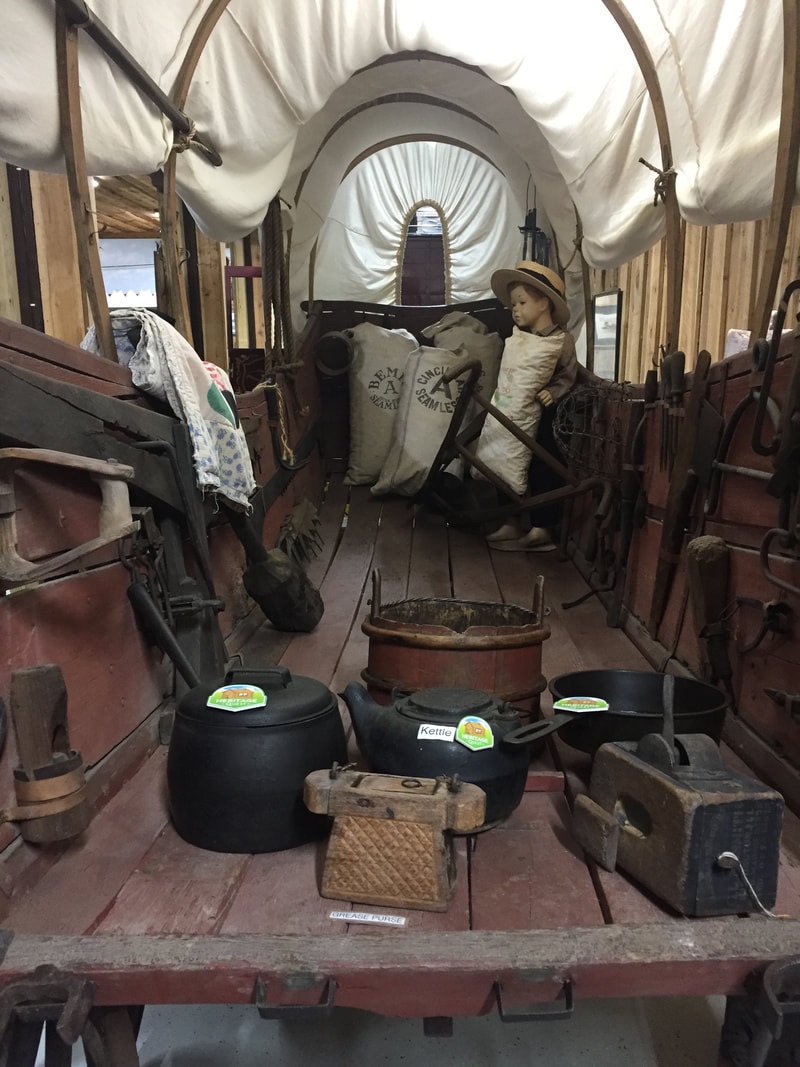Conestoga Wagon
|
The first known, specific mention of "Conestoga wagon" was by James Logan on December 31, 1717 in his accounting log after purchasing it from James Hendricks. It was named after the Conestoga River or Conestoga Township in Lancaster County, Pennsylvania, and thought to have been introduced by Mennonite German settlers. The Brethren of Lancaster County, an offshoot sect of the Mennonites, said that there was a local Native American tribe called the Conestoga.
|
The Conestoga wagon was built with its floor curved upward to prevent the contents from tipping and shifting. Including its tongue, the average Conestoga wagon was 18 feet (5.4 m) long, 11 feet (3.3 m) high, and 4 feet (1.2 m) in width. It could carry up to 12,000 pounds (5,400 kg) of cargo. The seams in the body of the wagon were caulked with tar to protect them from leaking while crossing rivers. Also for protection against bad weather, stretched across the wagon was a tough white canvas cover.
|
For pulling the heavy freight wagons the Conestoga horse, a special breed of medium to heavy draft horses, was developed. The Conestoga was never an established breed, and they could be of several different colors. The beginnings were from the same Conestoga Valley as the wagon being Lancaster County.
|



